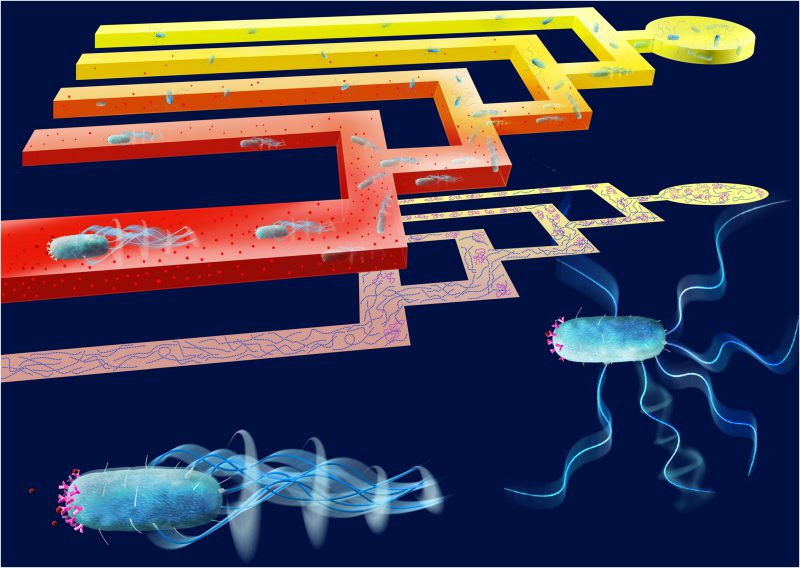Back to article: Bacterial maze runners reveal hidden diversity in chemotactic performance
FIGURE 1: Behavioral experiments with bacteria swimming through a microfluidic T-maze reveal strong heterogeneity in chemotactic sensitivity. A hydrogel-ased microfluidic T-maze creates a steady chemical gradient (red molecules) by eliminating flow in the swimming channel. As cells swim from right to left through the maze, they face a series of decisions at successive T-junctions, with the choice of approaching or avoiding the chemical stimulus (top). The T-maze can thus sort the better chemotaxers within a monoclonal population of bacteria or can be used to sort among populations with different behavioral characteristics (as shown in the schematic projection of individual bacterial trajectories, center, showing cells with strong (blue) and weak (purple) chemotactic performance). Also shown are cells in the two stages of motion underlying chemotaxis: a cell in running mode with high chemotactic sensitivity (left), bearing a higher number of chemoreceptors, and a cell in the tumbling mode (right), with lower sensitivity to the chemical gradient. Image credit: Salek, M.M., Carrara, F. Gorick, G. and Stocker, R.

